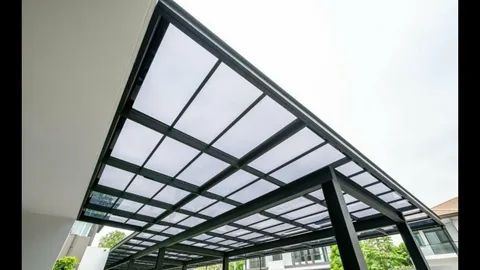In today’s rapidly evolving educational landscape, fostering a holistic understanding of problems and solutions is critical. This is where Systems Thinking Training comes into play, equipping educators, administrators, and policymakers with the tools to navigate complexities in education effectively. Systems thinking offers a structured approach to understanding interrelationships, identifying patterns, and addressing root causes rather than symptoms. By integrating this approach into education, we can achieve lasting excellence and transformative outcomes.
What is Systems Thinking in Education?
Systems thinking is a methodology that focuses on understanding the interconnections within complex systems. In the context of education, it involves examining how various elements—such as curriculum design, teacher training, student engagement, and administrative policies—interact to influence outcomes.
For instance, a drop in student performance might not be solely due to curriculum issues but could stem from factors such as insufficient teacher support, socioeconomic challenges, or even outdated teaching methods. Systems thinking enables educators to view these challenges as interconnected and address them in a holistic manner.
The Role of Systems Thinking Training in Education
Systems Thinking Training equips educators with the ability to:
- Identify Complex Interconnections: Teachers and administrators learn to see the big picture and recognize how various components of the education system interact.
- Foster Collaborative Problem-Solving: Systems thinking promotes collaboration by encouraging stakeholders to work together to address shared challenges.
- Develop Sustainable Solutions: Rather than offering quick fixes, systems thinking focuses on long-term, sustainable solutions that address root causes.
- Enhance Decision-Making Skills: By understanding the broader implications of their actions, educators can make better-informed decisions that benefit the entire learning ecosystem.
Key Benefits of Systems Thinking Training
- Improved Student Outcomes Systems thinking helps educators understand how various factors affect student performance. For example, a school implementing systems thinking might identify that low attendance is linked to transportation issues and parental engagement. Addressing these underlying causes can significantly improve attendance and academic outcomes.
- Stronger Teacher Development Educators benefit from Systems Thinking Training as it helps them understand how their teaching methods fit into the broader educational framework. By recognizing their role in the system, teachers can adapt their strategies to better align with institutional goals.
- Efficient Resource Allocation Schools and educational institutions often face resource constraints. Systems thinking helps administrators allocate resources more effectively by identifying areas where investments will yield the highest impact.
- Holistic Curriculum Design Curriculum developers can use systems thinking to create programs that integrate various subjects, fostering interdisciplinary learning. This approach ensures that students are equipped with critical thinking and problem-solving skills necessary for the real world.
Implementing Systems Thinking Training in Education
To successfully integrate Systems Thinking Training into the education sector, a structured approach is essential:
- Workshops and Seminars Organize interactive workshops to introduce educators to the basics of systems thinking. These sessions can include case studies, simulations, and hands-on activities to demonstrate the methodology’s practical applications.
- Professional Development Programs Incorporate systems thinking into ongoing professional development initiatives. This ensures that educators continuously enhance their skills and stay updated with the latest methodologies.
- Collaborative Learning Communities Establish communities of practice where educators can share insights, challenges, and best practices related to systems thinking. Collaborative learning accelerates the adoption of new approaches and fosters innovation.
- Incorporate Technology Leverage technology to support systems thinking. Tools like data visualization software and interactive platforms can help educators map out complex systems and identify patterns effectively.
Real-Life Examples of Systems Thinking in Education
Several schools and educational systems have successfully implemented systems thinking to improve outcomes:
- Singapore’s Education Model: Renowned for its excellence, Singapore’s education system incorporates systems thinking by emphasizing collaboration among stakeholders, data-driven decision-making, and adaptive learning strategies.
- Finland’s Holistic Approach: Finland’s education system, which prioritizes student well-being alongside academic achievement, exemplifies systems thinking. By addressing factors like mental health, extracurricular activities, and teacher support, Finland has created a sustainable and effective education model.
Overcoming Challenges in Adopting Systems Thinking
While the benefits of Systems Thinking Training are immense, adopting this approach comes with its challenges. Resistance to change, limited resources, and lack of awareness are common hurdles. To address these challenges:
- Provide Leadership Support: School leaders must champion systems thinking and encourage its adoption at all levels.
- Offer Accessible Training: Ensure that training programs are easily accessible to educators across various regions.
- Start Small: Begin with pilot programs and gradually scale up as stakeholders become more comfortable with the approach.
The Future of Education with Systems Thinking
As education systems worldwide face increasing complexity, Systems Thinking Training offers a way forward. By equipping educators with the tools to understand and address interconnected challenges, we can create a more adaptive and resilient education system. Ultimately, this approach not only improves academic outcomes but also prepares students to thrive in a complex, interconnected world.
Conclusion
Educational excellence is not achieved through isolated efforts but through a comprehensive understanding of how various elements of the system interact. Systems Thinking Training provides the framework to navigate these complexities, empowering educators to create impactful, sustainable solutions. By embracing this approach, schools can pave the way for a brighter, more interconnected future in education.
Also Read
- ► Azoospermia Treatment – Best IVF Centre in Pakistan
- ► South Africa Announce 2025 ICC Champions Trophy Squad
- ► Surgical Instruments in Lahore: A Comprehensive Guide
- ► How IELTS Mock Tests Help in Acing the Exam: Noida experts
- ► Expert Essay Help Services Australia
- ► Finding the Best Lawyer in Dubai: A Guide to Legal Expertise at DIFC
- ► Surgical Instrument Manufacturer in Lahore
- ► 11 Reasons Why Cathodic Protection Is Essential for Long-Term Asset Safety
- ► iPhone Screen Repair Dubai – Expert Fix Solutions
- ► The Essentials Hoodie | Comfort, Style, and Versatility
- ► Transform Your Health with the Best Cannabinoid Clinics in Sydney
- ► Top 10 Reasons to Upgrade to Canva Pro Subscription Today
- ► The Best Running Shoes for Healthcare Workers: Where Comfort Meets Performance
- ► AI Homework Help Free: Revolutionizing Learning for Australian Students
- ► What Colour Goes with Brown Leather Sofa: Chic Combinations





